 LAUREN'S BUTTERFLIES OF BELIZE (Part Thirteen) Is brought to you by Remax Island Real Estate - everything we touch turns to sold! 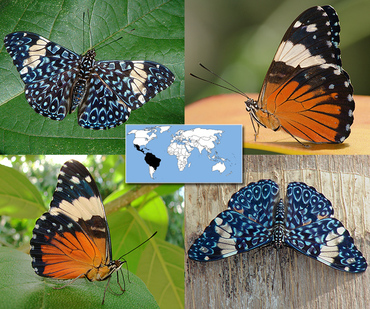 RED CRACKER BUTTERFLY SIGHTING Cracker butterflies commonly covered in varying colored spots, mostly of which resemble bark. These butterflies are common, to the country of Belize. They spend most of the day perching on trees, boulders, and other such surfaces against which they are camouflaged. The speckled species are often hard to distinguish. Since cracker butterflies have camouflage, they are not poisonous and do not have a chemical defense. Male cracker butterflies are known for their ability to crack their wings, which is believed to be either for mating or to ward off rival males. They use trees as courting territories. They prefer tree bark that matches wing coloration. This species often perch high in the trees, but as night approaches, they perch even higher. Perches exposed to direct sunlight are less used in hot days. All species perch with the head downwards. Perching males frequently fly towards female butterflies Each male perches on 1–4 trees daily, without difference between seasons, and each tree used has a minimum daily mean of 1.5 perching butterflies. Most interactions occur between 1 and 3 in the afternoon and are more frequent in the rainy season. Research has shown that cracker butterflies can also detect the sounds made by other butterflies, which would be a form of social communication. The organ of hearing is believed by some to be Vogel's organ, located at the base of the forewing subcostal and cubital veins. Unlike most butterflies, these species don't feed on nectar. Instead, cracker butterflies feed on rotting fruit, sap from leguminous trees, and animal dung. Cracker butterflies undergo metamorphosis just like any other species,, but lay their eggs only on the host plants that are members of the euphorbia family.
0 Comments
 LAUREN'S BUTTERFLIES OF BELIZE (Part Twelve) Is brought to you by Remax Island Real Estate - everything we touch turns to sold! 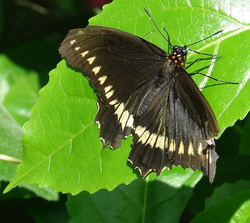 POLYDAMAS SWALLOWTAIL BUTTERFLIES The polydamas swallowtail butterfly is fairly uniform in appearance throughout North, Central, and South America, but it does displays considerable variation in the Caribbean, with almost every island featuring its own subspecies. Polydamas swallowtails are also sometimes referred to as tailless swallowtails or as gold-rim swallowtails, based on the pattern of wing spots on their wings. As rapid flyers the butterflies are difficult to identify in flight, but once seen they are easily distinguished from other similar species. The adults are extremely active and will rapidly beat their wings even when sipping nectar or puddling. Within their range, polydamas swallowtail butterflies are frequently found in open woods, abandoned fields, and disturbed areas such as construction sites and unpaved parking lots. In Belize, the species tends to avoid the deep forest, but may occasionally be found associated with the rainforest canopy. You will find polydamas swallowtail butterflies, from sea level up to 1,300 meters in elevation, particularly on disturbed slopes, which demonstrates their broad ecological tolerance for precipitation, humidity, and temperature. The female polydamas swallowtails after mating lay eggs that are covered in a waxy coating - in clusters of 5 to 20 on the exposed new stems of a plant called the Pipevine. Young caterpillars feed on leaves in groups. The caterpillars have a yellowish body bearing many fine black striations on each segment with yellow and black tubercles. The caterpillars also feature a characteristic that is used to distract potential predators and emit defensive chemicals. Even though small insular populations of polydamas swallowtail's are threatened, here in Belize the species fairs quite well.  LAUREN'S BUTTERFLIES OF BELIZE (Part Eleven) Is brought to you by Remax Island Real Estate - everything we touch turns to sold! 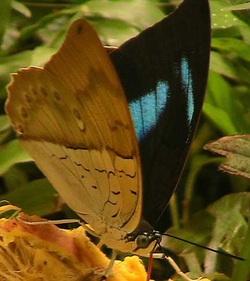 THE BLUE LEAFWING BUTTERFLY WOW! This is a beautiful butterfly. The Blue Leafwing Butterfly is the rarest butterfly of this species. Butterflies of this family are especially rich in the tropics and are especially abundant in Belize. They are highly variable, and there are more species in this butterfly family, than any other here in Belize. Adults vary in size from small to large, and their front legs are reduced, which makes them unable to be used for walking. Some Leafwing species have irregular margins (anglewings and commas), and others have long tail like projections (daggerwings). The most frequent colors of Leafwing butterflies are browns, oranges, yellows, and blacks. The iridescent colors such as purples and blues are among the rarest of this species. As seen above, the iridescent blue, makes this Leafwing a rare find indeed. For this reason, you will not find many pictures of this butterfly. Some Leafwing adults, live longer than most other butterflies, surviving 6-11 months. Adult feeding behavior depends on the species, where some groups primarily seek flower nectar, others feed only on the sap from flowers, rotting fruit, dung or animal carcasses. Males exhibit perching and patrolling behaviors when seeking mates. Egg-laying varies widely, as some species lay their eggs in clusters, while others lay their eggs in columns, or singly. If you get the great opportunity to see one of these, it's a true blessing. This butterfly is one of my favorites, because it is not only rare, but it is truly beautiful. Here are a few photos of me this past weekend.  LAUREN'S BUTTERFLIES OF BELIZE (Part Ten) Is brought to you by ReMax Island Real Estate - everything we touch, turns to sold! 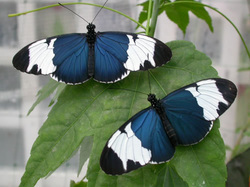 SAPHO LONGWING BUTTERFLIES Sapho Longwing belongs to the family Nymphalidae. Their prime origin is Costa Rica, but they have been seen in the rainforests of Belize. The caterpiller is quite unique (in that), it's only breeds on just one specific plant, the Passion Vine, also known as the Pittier's Passion Vine. There are actually only a few species of butterflies that breed on one specific plant and this may be the reason for their higher rate of extinction, as compared to other butterflies - who don't put all their eggs in one basket, or one plant as in this case. If the plant goes extinct the butterfly will surely follow.  LAUREN'S BUTTERFLIES OF BELIZE (Part Nine) Is brought to you by ReMax Island Real Estate - everything we touch, turns to sold! 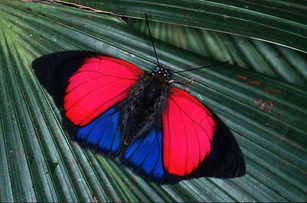 Agrias Butterfly, looking at the upperside of its wings. GEM OF THE BELIZE INSECT WORLD The Agrias Butterfly is known by many as the gem of the insect world. They are not only rare, but extremely hard to find, and rarely do you ever get to see one in the wild - as they reside mainly in the tree tops of the Belize rainforest. The Agrias Amydon Butterfly habitat, ranges from the southern tip of Mexico (northern part of Belize) going south through the Andes rain forests of Colombia to Bolivia, and East throughout much of the Amazon Basin, extending as far South as Iguazu Falls, Argentina. There are 5 Agrias species, and numerous subspecies. In amydon the upperside is dark brown with vivid crimson patches on the forewings. In some subspecies e.g. zenodorus and boliviensis the crimson is replaced by bright orange. The upperside hindwings have a smaller patch metallic blue (as you see above), which varies in size and hue according to subspecies. Males of all Agrias species have prominent yellow tufts of androconial scales on the hindwings. The butterflies spend most of their lives high in the canopy of the rainforests in Belize, and for this reason - it is very hard to get a glimpse of one. Agrias have always been highly prized by collectors, who use plantain, rotting fish and various other cocktails to attract the males down from the tree tops. They are amongst the most vividly marked and beautiful butterflies in the world. The Agrias are only active in hot conditions, and this is why their habitat is found in primary and secondary rainforest at altitudes between about 200-600m. The eggs are smooth, globular and laid singly on leaves of the food plants. The caterpillar when fully grown is olive brown, plump, and tapers toward the posterior, which is adorned with a pair of twisted caudal tails. The neck is narrow, and the head is very large in proportion to the body. To see one of these babies in the wild, is a rare sight indeed, and for this reason they are considered a Belize rainforest gem. The top of the winds are red, blue and black, the under part of the wings, look like the pictures below with yellow and dots. MONDAY MORNING & HERE WE ARE AT BANANA BEACH RESORT! 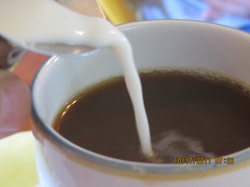 Coffee's on and pipping hot - at Banana Beach Resort. Mom woke up early and said to us kids, "Let's go out for breakfast!" So here we are at Banana Beach Resort on Ambergris Caye, in Belize. Us kids had fresh squeezed orange juice and mom had a fresh cup of brewed coffee, right from the pot. Christina (my sister) and I had a bagel with cream cheese, and a fruit plate. Trent (my brother), had smoked salmon, with a bagel, cream cheese and a fruit plate. Mom had a breakfast Mexican dish (don't know the name). They were all great! We finished just in time - to drive to school on our golf cart @ 20 mph.  LAUREN'S BUTTERFLIES OF BELIZE (Part Eight) Is brought to you by ReMax Island Real Estate - everything we touch, turns to sold!  SWALLOWTAIL CATTLEHEART BUTTERFLIES Swallowtail butterflies are beautiful, colorful and very large butterflies that are found in most every continent in the world, except Antarctica. They are also very abundant in Belize. There are over 500 species of swallowtails in the world! There are various kinds of swallowtail butterflies, and they are most often identified by the colors on their wings. A Swallowtail Cattleheart, is identified by the band of pink spots along its wings. Swallowtail Butterfly Habitat A vast majority of the swallowtail butterfly species are native to the tropical regions of the world (such as Central America - Belize), while a few other species are found in other parts of the world. The butterflies mainly prefer marshy areas and open grasslands, characterized by growth of various species of flowers. Swallowtail Butterfly Life Cycle Like most of the other species of butterflies, even swallowtails have a four stage life cycle. We learned this in kindergarten last year. The four growth stages of the butterfly are 1) egg; 2) caterpillar; 3) pupa, and; 4) adult butterfly. 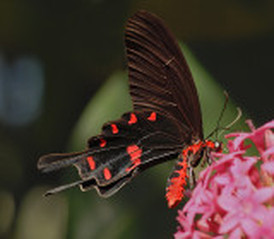 STAGE #1 - Egg Stage The life of a swallowtail butterfly begins in the form of an egg. The female lays eggs on a tree, so that the larvae gets ample food (in form of leaves) when the eggs are hatched. It takes around 4-5 days for the eggs to hatch. STAGE #2 - Caterpillar Stage When the caterpillar comes out of the egg, first of all it eats the egg shell, and then continues feeding on the leaves, available in plenty. Swallowtail caterpillars can grow up to a size of 2 inches. STAGE #3 - Pupa Stage The pupa is predominantly the resting stage for these species, as they transform from caterpillars to full-grown adult butterflies. This stage lasts for about 9 to 11 days. STAGE #4 - Adult Butterfly The final stage of the life of the swallowtails is characterized by a development of wings which enables these beautiful insects to fly. This entire process takes approximately one month, from start to finish. This cycle continues as the adult female butterflies lay eggs, when the conditions are favorable. Swallowtail Butterfly Diet While the caterpillars prefer to feed on plant foliage, adult swallowtails feed on nectar from various flowers in the surroundings. The tongue of these species is specially designed to suck nectar from the flat topped flowers. When not in use this flexible tongue is coiled up into a spiral formation. 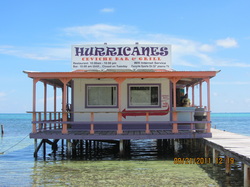 We had school off today........as always, mom takes us somewhere we've never been before. Today our adventure took us to Hurricane's. A great little beach front restaurant, in San Pedro, on Ambergris Caye. We went with our good friends Denise, Gabby, and Julie. We had so much fun looking at all the fish off the dock, and we each enjoyed our own smoothie. WOW! We couldn't decide which flavor was best. Christina had pineapple and as you can see, she drank her's the fastest. I got to see a stingray and a flounder fish in the water. Then the bartender put on Caribbean music for us, so we could eat and be happy at the same time. My dinner was great, there was nothing to box and take home. My food loved me at Hurricane's. So if you are out strolling the beach in San Pedro, stop and check out Hurricane's. I think you'll like it as much as we did. Tell them Lauren sent you. Not sure if the bar tender remembers me, but I remember him. |
LaurenHi, my name is Lauren. I've been living in Belize my entire life. I hope you enjoy reading about things all the things I like. BUTTERFLIES OF BELIZE!
Check out my current blog series on Butterflies of Belize. I have 72 butterflies to tell you about. COMING SOON!
I have a new blog series coming soon. IF YOU WOULD LIKE TO SPONSOR THIS SERIES WITH YOUR COMPANY'S ADVERTISEMENT, ...... Please let me know. Categories
All
Archives
May 2012
|
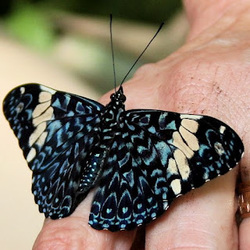
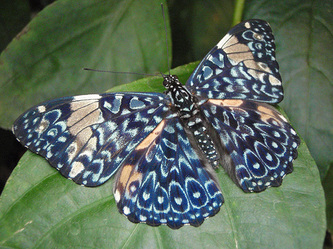
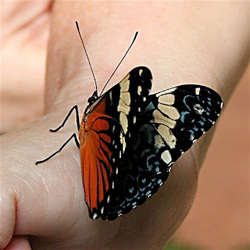
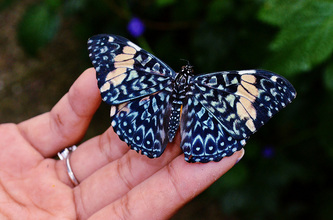
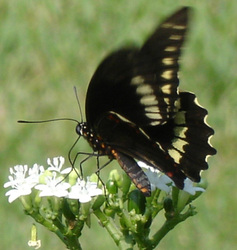
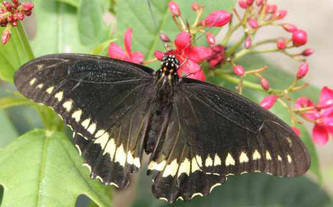
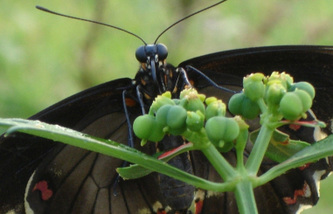
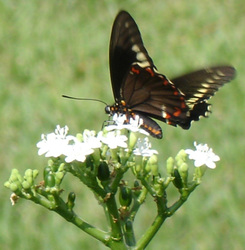
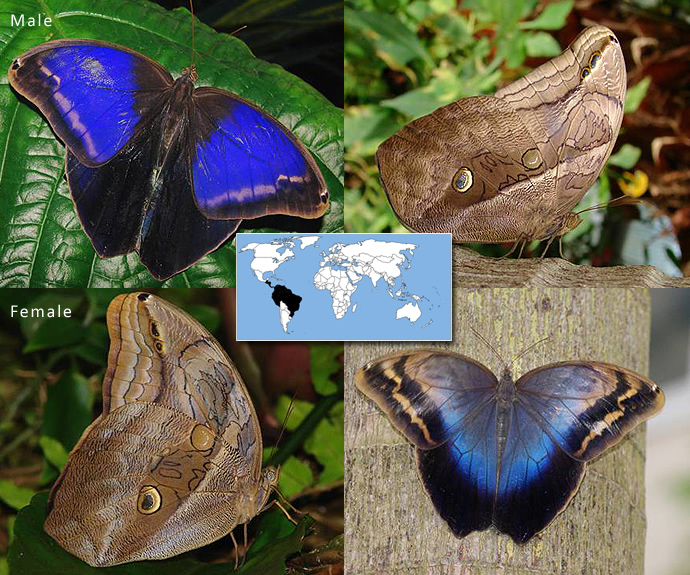



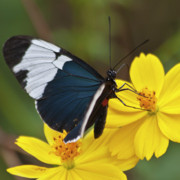
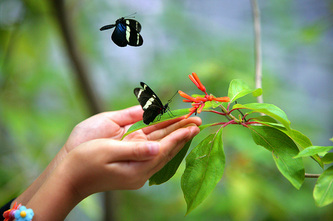
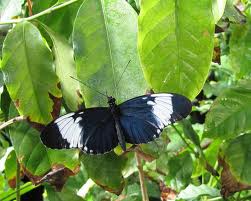

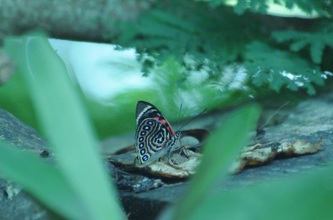
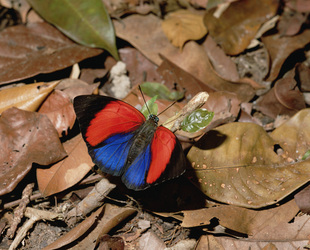
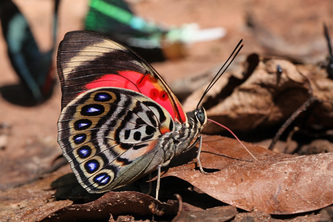

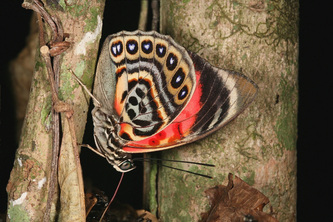

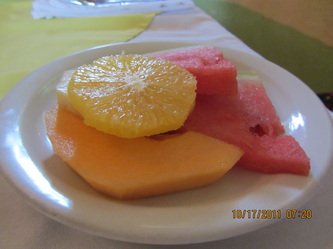
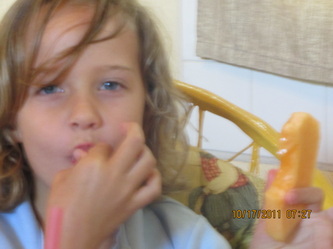
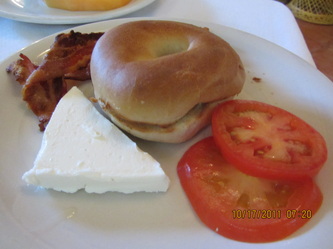
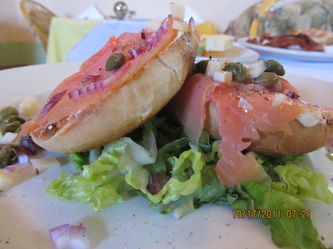

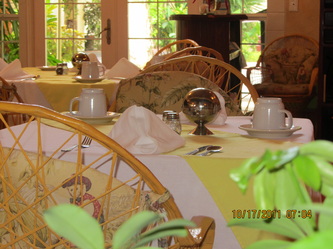
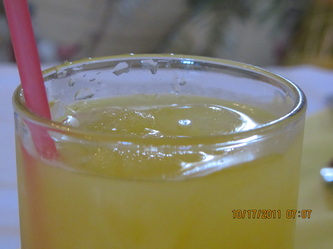


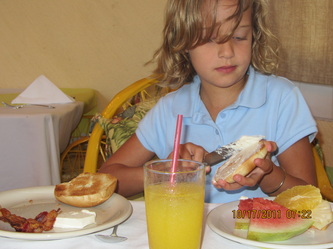

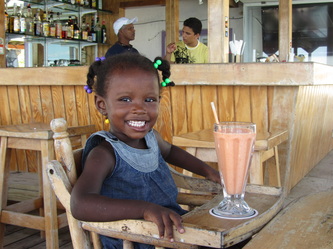
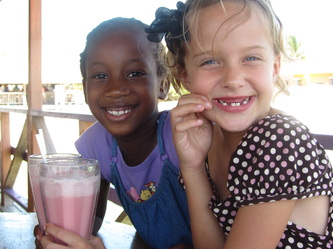
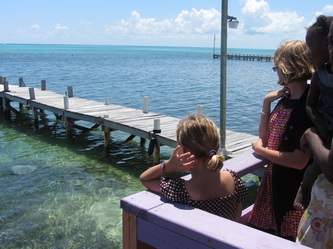
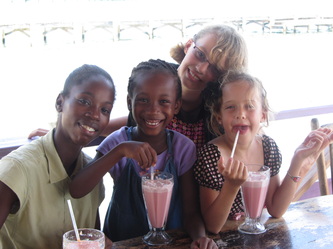
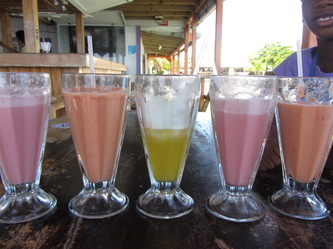

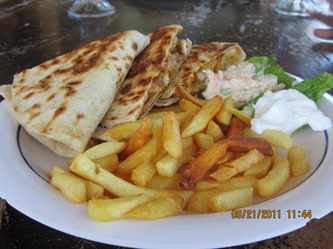
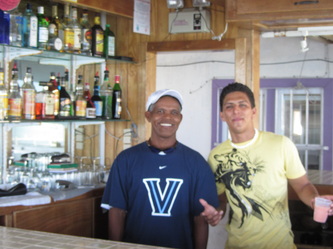
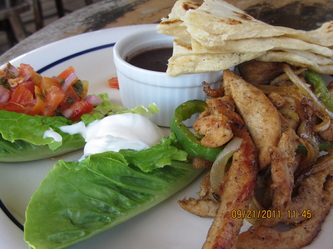
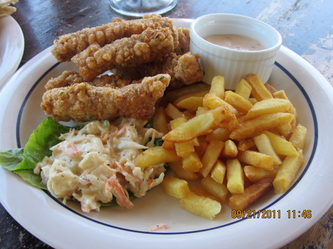
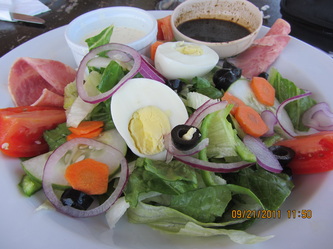
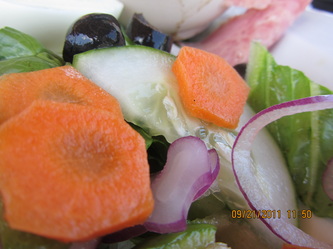
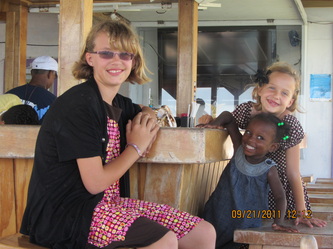
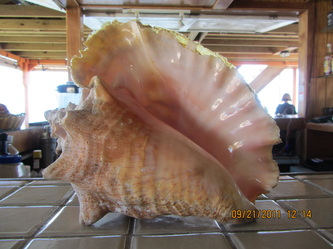
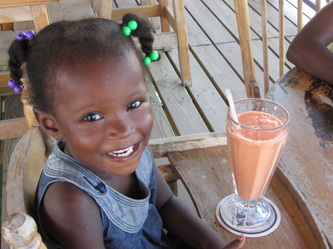

 RSS Feed
RSS Feed